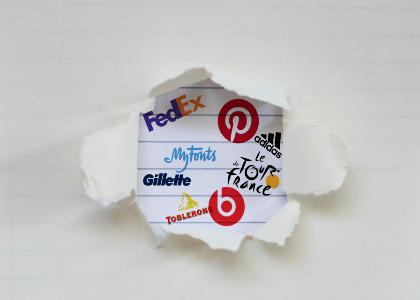Blog

The Story of the Santa Claus Symbol over the Years
What have in common Esso, Bell, Prince Albert Tobacco, Jell-O, Coca-Cola, and Kodak? These are all businesses that have used in the past the symbol of Santa Claus for their ads. Although it is now quite common to see our beloved old man being used as a marketing tool during the holiday season, he has been selected to help to sell products for more than 100 years!
Indeed, in 1919 Santa Clause was suggesting cigarettes to well-behaved adults! He surely is one of the most known marketing icons since World War II and the Americanization of the world. You are curious and you want to know how our holiday hero has been used over the years? Find 24 Santa Claus ads in this article.
Santa Claus was not created by Coca-Cola
Despite many recent urban legends, it is not Cola-Cola that have created the modern image of Santa Claus. Indeed, the man with the long white beard was already the spokesperson of many other companies before having an agreement with the renowned soda business. Their long love story began in 1931. Many campaigns have been made over the years, creating a strong bond between the two. Coca-Cola is still today known for its use of Santa Claus in their ads. Furthermore, Santa Clause was not inspired by Karl Marx or communism despite that there are some physical similarities between the father of the socialist movement and our generous Christmas man. It is only a coincidence.
Even though the origins of Santa Claus are many and often influenced by the part of the world where the tale is told, many historians have stated that it is Saint Nicholas that is the main inspiration for the character we all know today. But who is he exactly? Saint Nicholas was the bishop of the city of Myre, born in 270 after Christ. (Thus, Santa Claus or its symbol is more than a thousand years old!) He was canonized and it is believed that he performed miracles of which many were linked with children. Originally celebrated on December 6th, he is popular in the Netherlands, in Belgium and in some parts of France. He has the duty to bring gifts to well-behaved children while its counterpart has to punish them. Saint Nicholas formerly used to travel on the back of a donkey and was not overweight. There are also some pagan elements that merged into the legend and the character over the years.
Its modern image
We owe the first drawings and texts of the modern Santa Claus to the New-Yorkers of Dutch origin. They were also the ones who changed the original name of Sinter Klaas to Santa Claus. It is in 1821 that a poem named ‘’A visit from Saint Nicholas’’, written by a theology professor, emerged. It was also the first time our Christmas man was accompanied by his famous reindeer. Many illustrators in the subsequent years then had the duty to draw the poem, sometimes coloring the old man in red, sometimes in green. As you can guess, red finally won over time.
In addition, as the years went by, Santa Claus gained more and more weight on the drawings; however, he also became friendlier. Coca-Cola on its side chose a Santa Claus that looked like a loving grandfather for their ads. it surely had an influence on the final image we have now today. In conclusion, Christmas and Saint Nicholas’ day meld together, ending up in one major holiday on December 25th. The religious bishop holiday is however still celebrated in a few European regions.
Finally, have you been nice or naughty this year? In regard to all modern holidays, Santa Claus is surely one of the most known and used symbols, even if he is despite himself linked with consumerism and materialism; however he mostly still projects a positive and friendly image in the minds of children and adults. Do you want to know the story behind another great symbol? Take a look at our blog to read all our articles!
More tips and tricks on the blog


